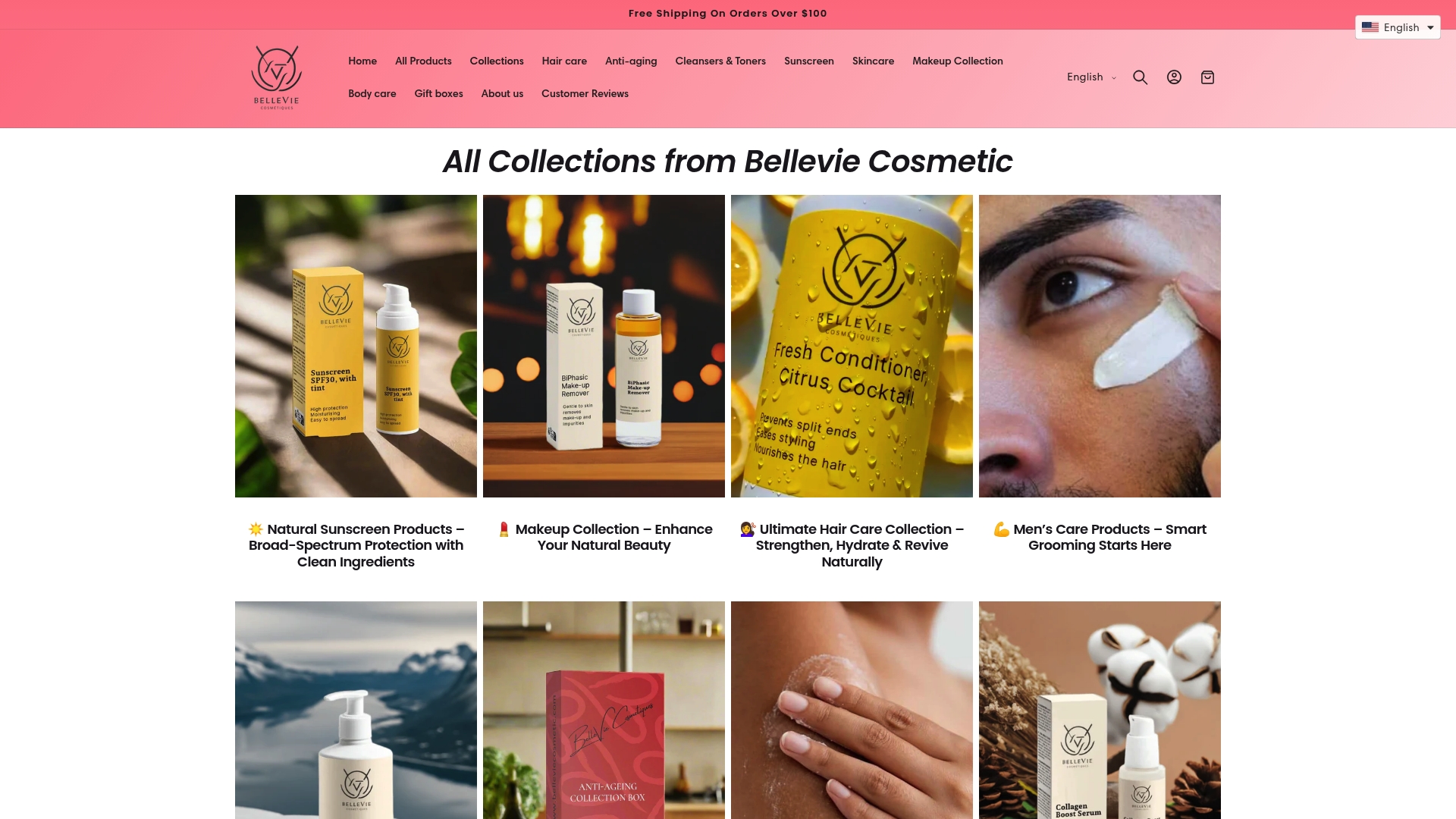Building a skincare routine seems straightforward and yet most people never see lasting results. Up to 80 percent of visible skin changes are actually influenced by habits outside your bathroom cabinet. Surprised? The most effective skincare plan starts before you ever buy a product and transforms your daily routine in unexpected ways.
Table of Contents
- Step 1: Evaluate Your Skin Type And Concerns
- Step 2: Research Suitable Ingredients And Products
- Step 3: Establish A Consistent Skincare Routine
- Step 4: Monitor Skin Reactions And Adjust Accordingly
- Step 5: Incorporate Lifestyle Changes For Better Skin Health
Quick Summary
| Key Point | Explanation |
|---|---|
| 1. Identify your skin type first | Assessing your skin type is essential for choosing appropriate skincare products tailored to your unique needs. |
| 2. Research key ingredients for concerns | Knowing the active ingredients that cater to your skin issues can lead to more effective treatments. |
| 3. Establish a consistent skincare routine | A structured routine ensures effectiveness by systematically addressing skin health day and night. |
| 4. Monitor skin reactions closely | Regular tracking of your skin’s response helps in adjusting your regimen for optimal results. |
| 5. Incorporate healthy lifestyle choices | A holistic approach, including diet and stress management, supports and enhances your skincare regimen. |
Step 1: Evaluate Your Skin Type and Concerns
Understanding your skin is the foundational first step in creating an effective skincare strategy. Before investing in products or treatments, you need a clear assessment of your skin’s unique characteristics and specific concerns. This crucial initial evaluation will guide your entire skincare approach, helping you select products that address your individual needs.
To help you quickly compare the main skin types described in the guide, the following table highlights each type’s key characteristics and common signs.
| Skin Type | Key Characteristics | Common Signs |
|---|---|---|
| Oily | Shiny, slick texture, enlarged pores | Excess oil, visible pores, makeup slides off |
| Dry | Tightness, rough patches, flaky appearance | Dullness, discomfort, visible skin flaking |
| Combination | Oily T-zone, dry/normal elsewhere | Shiny forehead/nose/chin, normal or dry cheeks |
| Sensitive | Redness, discomfort, reactive to products | Burning, stinging, visible irritation |
Identifying Your Skin Type
To determine your skin type, start with a simple at-home assessment. Cleanse your face with a gentle, fragrance-free cleanser and pat dry. Wait approximately 30 minutes without applying any additional products. During this time, observe how your skin feels and looks.
Oily skin typically appears shiny and feels slick, with visible enlarged pores. Dry skin might feel tight, look flaky, or have rough patches. Combination skin presents as oily in the T-zone (forehead, nose, chin) while remaining dry or normal in other areas. Sensitive skin may show signs of redness, feel uncomfortable, or react quickly to new products.
According to Cleveland Clinic, skin type can change due to various factors including:
- Hormonal fluctuations
- Stress levels
- Dietary habits
- Medication use
- Environmental conditions
Mapping Your Specific Skin Concerns
Beyond identifying your skin type, pinpoint specific concerns that require targeted treatment. Common issues include:
- Persistent acne or breakouts
- Fine lines and early aging signs
- Uneven skin tone or hyperpigmentation
- Persistent dryness or dehydration
- Increased skin sensitivity
- Visible pore size
Take detailed notes about your skin’s behavior. Photograph your skin in natural light to track changes over time. Consider consulting a dermatologist for a professional assessment if you have complex or persistent skin challenges. This comprehensive evaluation provides the roadmap for your personalized skincare journey, ensuring you choose products that genuinely support your skin’s health and appearance.

Remember, skincare is not one-size-fits-all. What works for someone else might not work for you. Your unique skin requires a tailored approach that respects its individual characteristics and responds to its specific needs.
Step 2: Research Suitable Ingredients and Products
After identifying your skin type and concerns, the next critical step is researching ingredients and products that will effectively address your specific needs. This investigative process requires a strategic approach, combining scientific understanding with targeted exploration.
Start by understanding which active ingredients correspond to your skin concerns. For acne-prone skin, look for salicylic acid and niacinamide. Those targeting aging should focus on peptides, hyaluronic acid, and bakuchiol as gentler alternatives to traditional retinoids. Individuals with sensitive skin might prioritize ceramides and panthenol for barrier repair and hydration.
Research requires more than just internet browsing. Consult professional resources like dermatology journals, reputable skincare blogs, and expert reviews. Pay attention to ingredient concentrations and formulation details. Not all products containing an ingredient will deliver the same results. Concentration matters significantly.
According to Cleveland Clinic, key considerations when researching products include:
- Ingredient compatibility with your specific skin type
- Potential interactions between different skincare components
- Clinical studies supporting product claims
- Potential allergens or irritants
Developing Your Product Research Strategy
Create a systematic approach to product research. Begin by creating a spreadsheet or dedicated notebook tracking potential products. Document key details like:
- Active ingredients and their percentages
- Product price point
- User reviews from verified purchasers
- Potential compatibility with your current skincare routine
If you want to enhance your skincare research process, check out our comprehensive guide on skincare results for additional insights.
Remember that marketing claims can be misleading. Look beyond beautiful packaging and persuasive advertising. Prioritize transparency, ingredient lists, and scientific backing. Consider patch testing new products and introducing them gradually to minimize potential adverse reactions.
Successful product research isn’t about finding a miracle solution but understanding how specific ingredients interact with your unique skin. Patience, thorough investigation, and a willingness to adjust your approach are key to developing an effective skincare strategy.
Step 3: Establish a Consistent Skincare Routine
Consistency transforms skincare from a random collection of products into a powerful wellness strategy. Your newly researched ingredients and personalized understanding of your skin type now require a structured, daily approach that transforms knowledge into tangible results. A well-designed routine is not about complexity, but about strategic, predictable application.
Begin by organizing your products in order of application, typically moving from thinnest to thickest consistency. Morning routines should prioritize protection, while evening routines focus on repair and regeneration. Start with a gentle cleanser that respects your skin’s natural barrier, followed by targeted treatments like serums, and finish with moisturizer and sunscreen during the day.
According to American Academy of Dermatology, a fundamental routine should include:
- Gentle cleansing
- Hydrating treatment
- Protective moisturizer
- Broad-spectrum sunscreen
Timeline and frequency matter as much as product selection. Morning routines typically require less intensive treatment, while nighttime allows for more concentrated repair ingredients. Implement a gradual introduction approach with new products, introducing one item every two weeks to monitor skin reaction and effectiveness.
If you want deeper insights into maintaining a rock-solid skincare routine, explore our comprehensive guide on skincare consistency for advanced strategies.
Track your skin’s response meticulously. Take weekly progress photos, noting texture changes, breakouts, or improvements. Be patient and realistic. Visible results often require 4-6 weeks of consistent application. Your routine is a living strategy that will evolve with your skin’s changing needs, seasonal variations, and personal health factors.
Key verification signs of a successful routine include balanced skin hydration, reduced inflammation, improved texture, and a natural, healthy glow.
Remember that skincare is a journey, not a destination. Flexibility, observation, and gentle self-care are your most valuable tools in creating a routine that genuinely works for you.
Step 4: Monitor Skin Reactions and Adjust Accordingly
Successful skincare is a dynamic process that requires continuous observation and strategic adaptation. After establishing your routine, your primary focus shifts to carefully monitoring how your skin responds to new products and treatments. This step is crucial because individual skin reactions can vary significantly, even with products typically considered gentle or universally beneficial.
Begin by creating a comprehensive tracking system. Use a dedicated journal or digital app to document daily skin observations. Note texture changes, breakouts, sensitivity, hydration levels, and overall appearance. Take well-lit, consistent weekly photographs in similar lighting conditions to objectively track subtle transformations. Pay special attention to how your skin feels immediately after product application and during the following 24-48 hours.
This table summarizes common adverse skin reactions discussed in the article, their typical causes, and recommended actions you can take to resolve them.
| Reaction | Possible Cause | Recommended Action |
|---|---|---|
| Persistent redness/inflammation | Irritation from new product or ingredient | Discontinue suspected product, patch test new items |
| Increased breakouts | Product incompatibility or clogged pores | Eliminate new product, review ingredient list |
| Burning or stinging | Sensitivity or allergic response | Stop use immediately, consult dermatologist |
| Excessive dryness or unexpected oil | Overuse of actives or barrier disruption | Increase hydration, use barrier-repair moisturizer |
| Delayed healing | Ongoing irritation or stress | Simplify routine, allow skin recovery |
According to Dermatology Research and Practice, individualized skincare adjustment is essential for managing skin concerns effectively. Look for specific reaction indicators that might signal the need for routine modification:
- Persistent redness or inflammation
- Increased breakouts or unusual skin texture
- Burning or stinging sensations
- Excessive dryness or unexpected oiliness
- Delayed healing of minor skin irritations
If you’re seeking more comprehensive strategies for managing your skincare routine, explore our guide on resetting your skincare approach for additional insights.
When identifying problematic products, implement a systematic elimination process. Remove one product at a time and observe how your skin responds. This methodical approach helps pinpoint exact ingredients causing adverse reactions. Consider consulting a dermatologist if reactions persist or worsen, as they can provide professional insights into potential allergens or underlying skin conditions.
Remember that skin adaptation takes time. Sudden, dramatic changes are rarely recommended. Most effective skincare routines require 4-6 weeks of consistent use before showing meaningful results. Patience, meticulous observation, and a willingness to make incremental adjustments are your greatest assets in developing a truly personalized skincare strategy.

Step 5: Incorporate Lifestyle Changes for Better Skin Health
Healthy skin is more than just a collection of topical products. Your daily lifestyle choices profoundly impact your skin’s appearance, resilience, and long-term health. This step focuses on holistic strategies that support your skincare routine from the inside out, transforming your approach from reactive treatment to proactive wellness.
Diet plays a critical role in skin health. Focus on consuming whole foods rich in antioxidants, omega-3 fatty acids, and essential nutrients. Incorporate colorful vegetables, lean proteins, and foods high in vitamins A, C, and E. Reduce processed sugar and inflammatory foods that can trigger skin reactions. Hydration is equally crucial. Aim to drink approximately eight glasses of water daily, understanding that proper internal hydration directly reflects in your skin’s external appearance.
According to National Institutes of Health, lifestyle factors significantly influence skin health. Consider these foundational lifestyle modifications:
- Prioritize 7-9 hours of quality sleep nightly
- Implement daily stress reduction techniques
- Maintain consistent physical activity
- Limit alcohol and eliminate smoking
- Practice sun protection beyond skincare products
Sleep is your body’s natural regeneration period. During deep sleep cycles, your skin repairs cellular damage, produces collagen, and balances hydration. Create a consistent sleep environment by maintaining a cool, dark bedroom and establishing a relaxing pre-sleep routine that minimizes screen time and reduces potential stress triggers.
Stress management is another critical component. Chronic stress releases cortisol, which can accelerate skin aging and trigger inflammatory responses. Integrate mindfulness practices like meditation, deep breathing exercises, or gentle yoga. These techniques not only reduce stress but also improve overall physiological balance.
Physical activity boosts circulation, supports cellular repair, and helps flush toxins through increased perspiration. Aim for a mix of cardiovascular exercise and strength training, understanding that movement is medicine for your skin. Even 30 minutes of moderate exercise can significantly improve skin health and appearance.
Verify your progress by tracking skin changes, energy levels, and overall well-being. Your skin should appear more radiant, feel more supple, and show increased resilience to environmental stressors. Remember, lifestyle transformation is a gradual journey of consistent, intentional choices.
Ready to Turn Your Personalized Skincare Knowledge Into Stunning Results?
You have just learned how to identify your skin type, research ingredients, create a routine, track skin reactions, and embrace lifestyle changes. But taking action can be hard when you feel overwhelmed by confusing product labels, harsh chemicals, or hype-filled marketing. If your goal is real, visible change for your unique skin concerns, you deserve formulas that honor your skin’s needs from start to finish.

Discover how clean, scientifically proven ingredients designed for sensitive, aging, dry, or blemish-prone skin can transform your daily routine into something you look forward to. Explore our full range of natural and clinically backed collections engineered for every skin journey. Each BelleVie product is crafted in Europe with powerful actives and gentle botanicals. If you want to improve your routine’s consistency and finally see the healthy, radiant results you crave, now is the time to make your next move. Visit BelleVieCosmetic.com and unlock exclusive gifts and offers for your fresh start today.
Frequently Asked Questions
How do I determine my skin type?
To determine your skin type, cleanse your face with a gentle cleanser and wait about 30 minutes without applying any products. Observe your skin for characteristics like oiliness, dryness, or sensitivity in that time.
What ingredients should I look for based on my skin concerns?
For acne-prone skin, consider ingredients like salicylic acid and niacinamide. If targeting aging, look for peptides and hyaluronic acid. For sensitive skin, prioritize ceramides and panthenol for hydration and barrier repair.
How often should I introduce new skincare products into my routine?
Introduce new products gradually, ideally one at a time every two weeks. This allows you to monitor how your skin reacts to each product without overwhelming it.
What lifestyle changes can improve my skin health?
To enhance your skin health, focus on a balanced diet rich in antioxidants, stay hydrated, get 7-9 hours of sleep, manage stress, and engage in regular physical activity. These factors contribute significantly to your skin’s overall appearance and resilience.
💬 Not sure how to address your specific skin concerns?
Chat directly with our AI Beauty Advisor on Instagram and get personalized product tips tailored to your skin needs.
